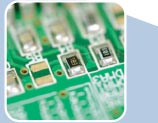 |
||||
  |
    |
|||
|
||||
|
|
||||
|
Over the years, I've acquired a few other camera batteries from various sources. I recently upgraded my wife's EOS 50D to an 80D and 2 years ago my 5D became a backup to a 5D Mark III ... the need for more LP-E6 batteries increased ... so I went on a shopping binge. We have two genuine Canon batteries and I'm going to put them side by side with Kastar (KastarUSA), Powerextra, M2cpower, Vivitar, Sterlingtek (STK), DSTE, Wasabi Power, and ... of course, Canon! I might even find a couple of others along the way and add them into the mix. I'm measuring all of them right now... all the pictures are thumbnails - click to see a full size version. Here is a snapshot of my logging program gathering data on one of the DSTE batteries: Final results coming soon! In the process, I've found some things about some of these aftermarket batteries that I think need to be shouted from the rooftops, or at least the modern day equivalent of that which would be an article on the web. There are tons of reviews and youtube videos out there with people giving reviews based on just the paper specifications. Sadly, many of those reviews are complete crap as there is no experimental data to back up the paper specifications. There is a saying - figures don't lie but liars figure. People that don't know any better watch these videos and listen to "experts" and make bad buying decisions based on this. I'm going to change that! Some very early results I've got batteries from Kastar, Sterlingtek (stk), DSTE and Canon in my hot little hands right now ... and more will arrive in the next week or two. It takes time - each discharge curve has taken between 2 and 3.25 hours to generate and batteries need to be charged between discharge cycles which also takes time. Here are the first batch of contenders all posing for a group shot: Some of these batteries are quite good - and some are barely 2/3 as good as others. This is a snapshot of a whole bunch of discharge curves over time under a constant load showing the voltage drop over time. The X axis represents the number of minutes, the Y axis is the voltage out of the battery under a decent constant resistive load: Each line is a single discharge curve and I have 8-10 different batteries right now from 4 vendors -- more coming -- with some discharges repeating multiple times. "Why multiple times?" Glad you asked that ... to see if the initial capacity is artificially low and if it will get better over a couple of cycles or not. And I've got a ton of raw data to back these curves up: I've got a lot of work before the curves really mean anything - and I certainly want to be a responsible engineer give all the vendors a chance to possibly replace a defective battery with a good one so nobody is abnormally slammed for a supplier error any company could make. So I'm not yet ready to expose the good, bad, and the ugly ... but I assure you I will! I plan to go through all this in detail, probably more than most people want to read. But this first set of curves is telling me that if I don't test a new battery when it arrives it is likely to screw me at a critical moment and I won't get the shot. My goal is to answer the answer to the question "How do those Amazon / eBay / aftermarket LP-E6 batteries compare to those expensive genuine Canon batteries?" as well as find who makes the best performing and best bang-for-the-buck after market batteries. More to come! Like I said above, this is a pre-article so the bots can index the content. If you liked this or have questions, please shoot me an email and say hi! If you ask, I'll keep you informed of any updates - especially when the first set of results are published. I'm a real person, a both self and school trained engineer with a hardware / software / networking background and also a photo junkie ... not some spam gathering email harvesting big corporate junk mail house.Send me an email to this address which I've setup to collect an interested people list: eosbatt at dascc dot com. Thanks! David Soussan
|
||||

